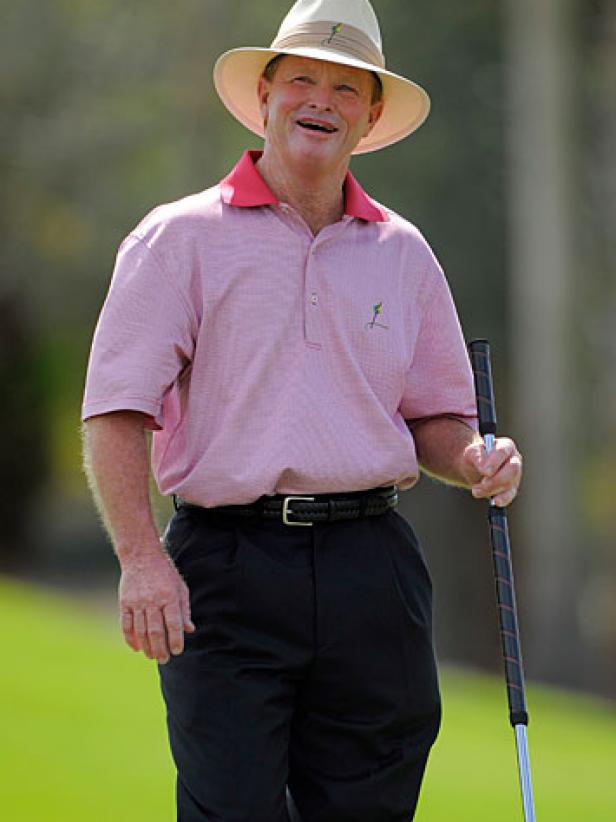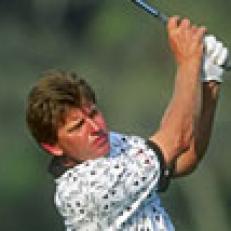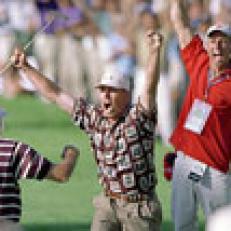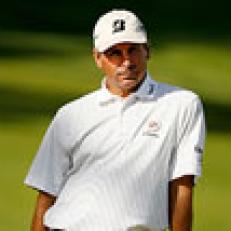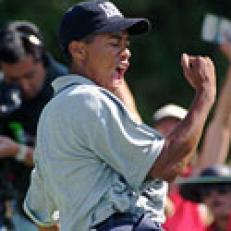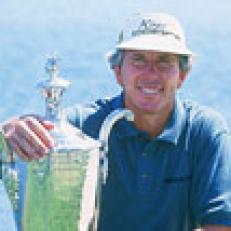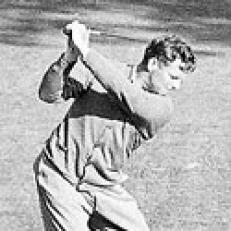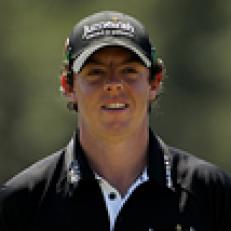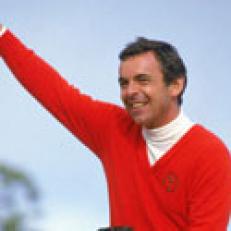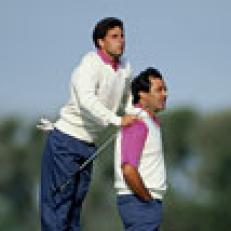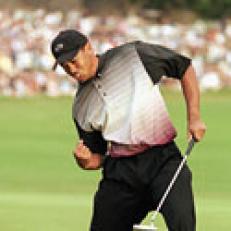My Five: The Best At Getting Better
Tom KiteBehind early growing up in Austin and during their early days as pros, Kite played the tortoise to Ben Crenshaw's hare. Though he didn't win a tournament on the tour until his fourth season in 1976, the physically unimposing Kite studied his weaknesses and worked relentlessly to correct them. He made his swing more powerful and efficient, was one of the first players use a sports psychologist, transformed his body through fitness regimen, and made a huge contribution to the modern game by pioneering the use of the 60-degree wedge. After failing in the late stages of several majors, he learned from his mistakes and played an airtight final round to win the 1992 U.S. Open at Pebble Beach. Kite was playing the best golf of his life in 1993 when a back injury at age 43 helped stop his PGA Tour winning total at 19.
Photo By: Scott A. Miller/Getty Images
Vijay SinghSingh's amazing odyssey from Fiji to World No. 1 has never been given its proper due. With a low-handicap father and a 1977 Tom Weiskopf swing sequence in Golf Digest as his golf models, Singh as a boy began to understand his swing through the time-tested process of trial and error, and has never stopped. Through tours in Asia, Australia, Europe and finally the U.S., no current regular tour player has practiced longer, harder, or more productively. Singh was still raw when he won PGA Tour Rookie of the Year in 1993, but he kept honing his skills, eventually winning 34 tournaments and three majors, and in 2004, winning nine times and overtaking Tiger Woods at No. 1. He is king of the heavy club and other swing gadgets that can usually be found strewn around his outpost on the practice range, where smart young players go to get inspired.
Photo By: Michael Cohen/Getty Images
Ben HoganHogan in essence invented practice, becoming the first player of note who would hit balls after rounds. A late bloomer who as a young man fought a hook, Hogan "dug it out of the dirt" to improve his swing, but didn't win his first major until age 34. From 1946 to 1948 he played some of the best golf ever seen, but when he had to start over after his car accident, it was his work ethic and intense desire to keep getting better that carried him to his true glory years, culminating in his Triple Crown in 1953 at age 41. "This sounds stupid, but I thought I was always in a slump," Hogan told Golf Digest's Nick Seitz in 1987, going on to say, "Most of the enjoyment in life is in improving."
Photo By: AP Photo
Nick FaldoIn his partnership with swing instructor David Leadbetter, Faldo set the template for the modern player-guru relationship. Though a successful tour pro in his mid 20s, the 6-foot-3 Faldo was convinced that his technique was too loose and leggy to hold up under major championship pressure, so in 1984 he implored Leadbetter to "throw the book" at him. After two years of risky overhaul during which his game nearly vanished, Faldo emerged with a more consistent, big-muscle driven action to win the 1987 British Open, and for the next decade would be a major championship specialist, eventually winning six of them. Admittedly obsessed in his prime years with making every part of his game better, Faldo eventually found the cost too great to sustain, and after his 1996 Masters victory, never contended in a major again.
Photo By: Stephen Munday/etty Images
Bernhard LangerThough he does everything quietly, testimony to Langer's gift for improvement is a swing that has gotten better with age and a waistline that hasn't changed. When he turned pro at age 15 in Germany, Langer had an overly strong grip and too flat a back swing, but was sustained by his hunger for success. Through carefully considered alterations with original coach Willy Hoffman and others, he made himself a more consistent ball-striker who won two Masters. But it was Langer' ability to overcome the yips four times that truly illustrates his ability to find order amid golf chaos. It's why among all the major champions born in 1957 -- including Faldo, Ballesteros, Price and O'Meara -- it is Langer who has preserved his game the best.
Photo By: Darren Carroll/Getty Images
